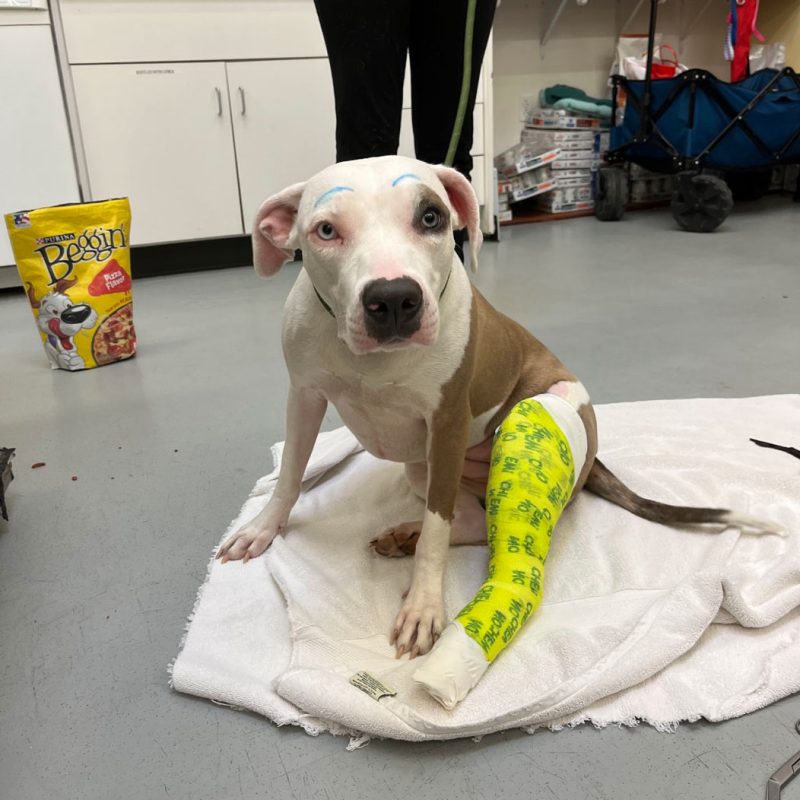When us humans break a bone the usual protocol is to wear a cast for a few or several weeks while your body does the majority of the work, healing itself while the cast keeps everything in place.
You might think the same is for animals when they break a bone, but unfortunately, it’s not that easy.
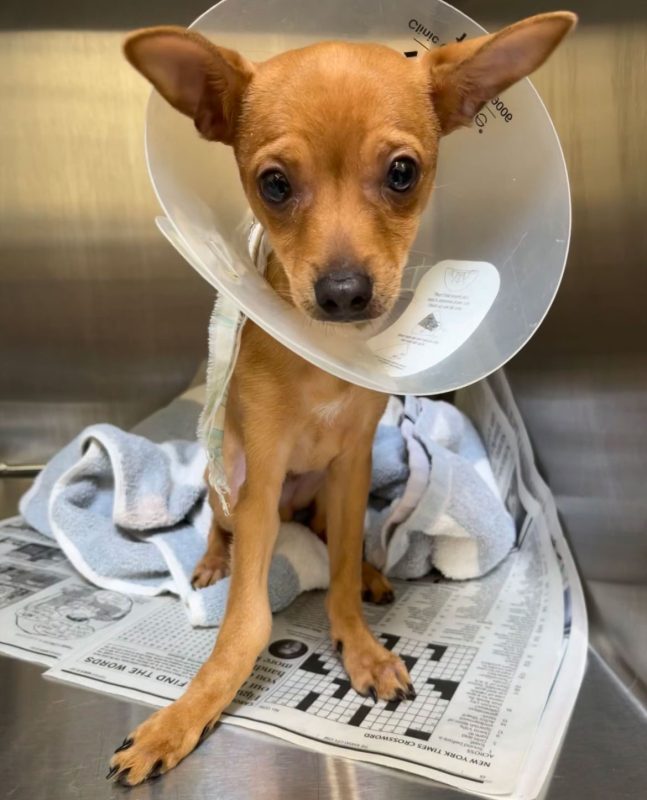
When a pet breaks a bone, the first step is to take x-rays to determine the level and severity of the break. There are a few different types of fractures such as: incomplete or complete fracture (incomplete meaning the bone did not break all the way through, complete meaning the bone did break all the way through), transverse, oblique or comminuted (transverse means straight across bone, oblique means diagonally across the bone, and comminuted means the break is in three or more segments), and lastly a open or closed fracture (open meaning there is an open, visible wound, closed meaning there is no visible wound).
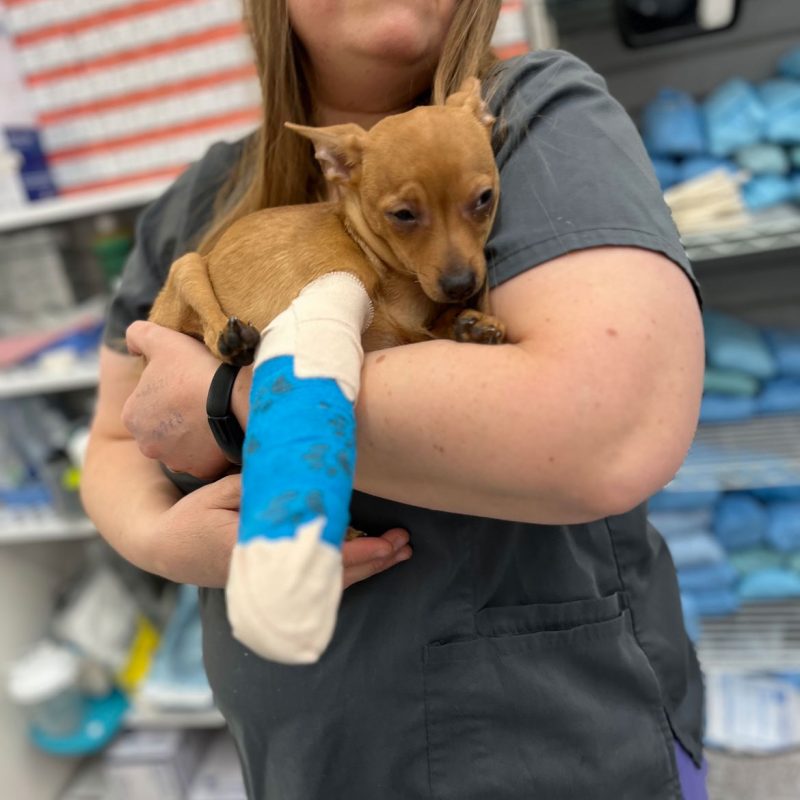
Depending on the severity of the break, and the temperament of the dog, the vet will decide between wrapping the leg in a cast similar to humans, or amputation. Most would think the cast option is the way to go, but animals can quickly adapt to having one less limb unlike humans and going the cast route can actually be more risky. This is because a cast is uncomfortable, and the pet will scratch and tear at it until it is removed or they must wear a large e-collar or cone. They also have to be on strict activity restriction, and most vets will recommend cage rest until the bone is fully healed. Weekly vet visits will also likely be recommended so that the healing can be assessed and the cast re-wrapped.
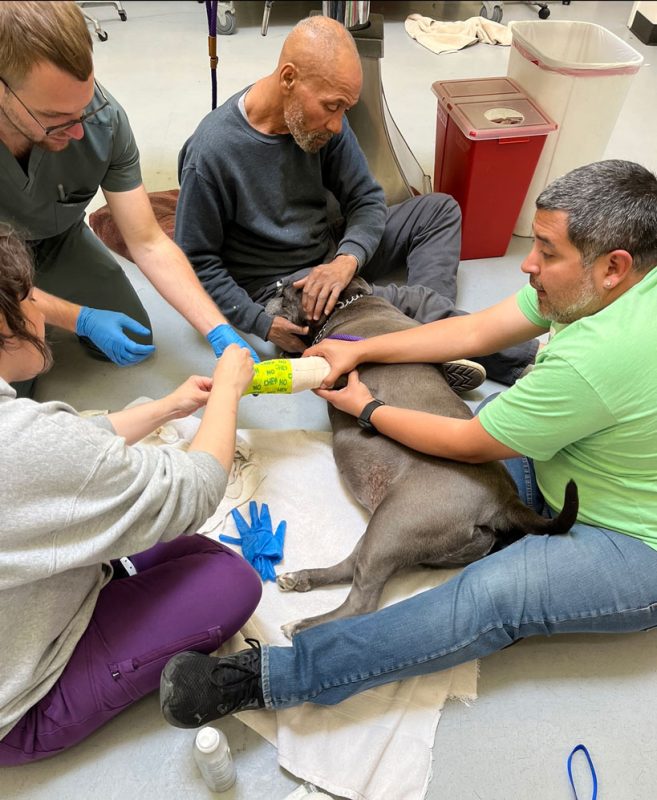
And even when the bone is fully healed, there is still a chance that the bone could heal incorrectly, or that the pet could need extensive physical therapy. As you could imagine, physical therapy on top of all of the previous vet visits gets to be very pricey.
Clearly the healing process of a broken bone can be extensive, but amputation on the other hand has a healing time of about two weeks. With the pet usually learning how to walk on their now three legs within a few days. However, losing a front leg can be more challenging than losing a hind leg, and the pet may not be able to walk or run as long as they once were able to.
You might think this situation will never happen to your pet, but broken bones happen more often than you’d think. They are one of the most common things we treat in our urgent care. They typically happen most often in small dogs and puppies, usually from falling off the bed/couch or even from accidentally being stepped on by an owner or another pet in the home. Large dogs and cats however, typically have broken bones from trauma such as being hit by a car.
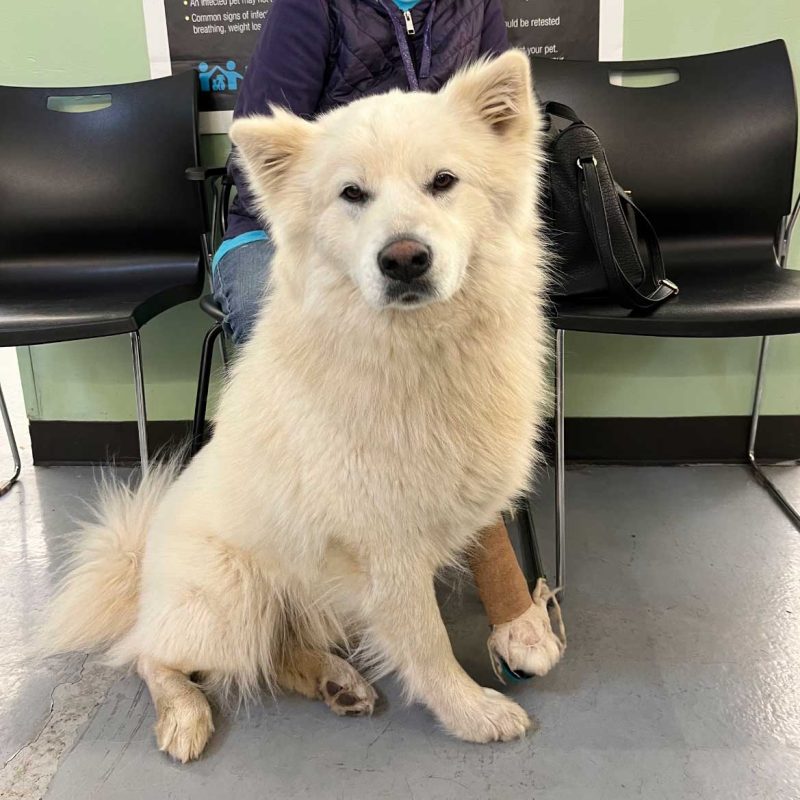
Having a broken bone is an all-around terrible and traumatic thing for a pet to go through. And on top of it all, you can’t explain what’s happening to them. That’s why no matter what you would choose for your pet, whether it be amputation or a cast, it’s better to play it safe than sorry and take measures to avoid such a thing. Like not letting your cat outdoors, spaying/neutering your pet so they don’t feel a need to venture off and find a mate, and never letting your pet off-leash unless in a safe, fenced in area.
But accidents do happen, and that’s why we’re here for you at our urgent care. Especially if money is a concern, we try to make these accidents something that won’t break the bank.
